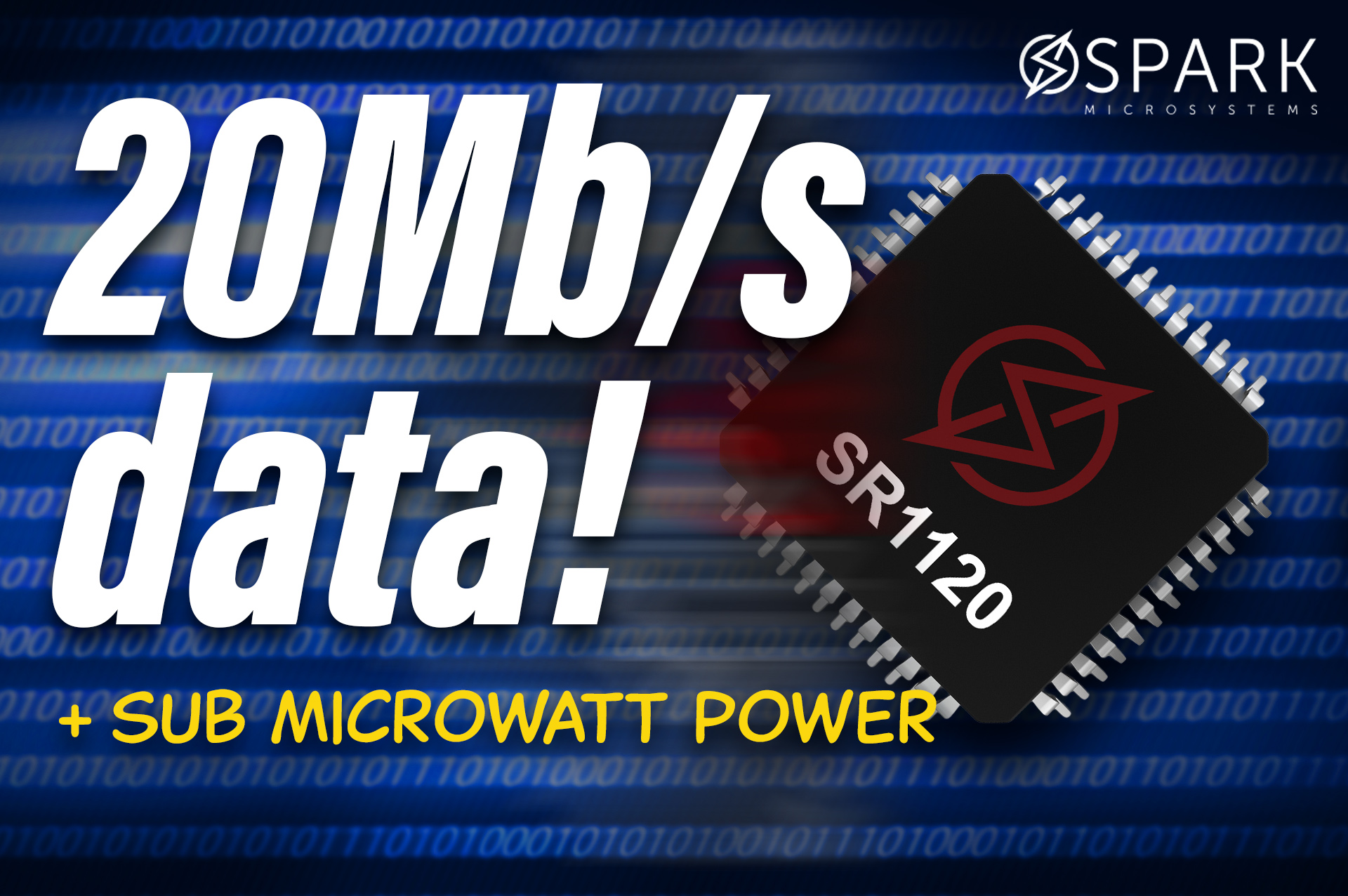Published
29 September 2025
Written by Luke Forster
Wireless designed by engineers, for engineers
When most engineers think about short-range wireless connectivity, the default option is usually Bluetooth. But what happens when a group of engineers decide that existing technologies don’t deliver the latency, data rate, or power efficiency required for their projects? That’s where SPARK Microsystems enters the picture.
Born out of a team of engineers and academics, SPARK Microsystems has developed an ultra-wideband transceiver that redefines what is possible for connectivity at the edge. With sub-millisecond latency, throughput up to 20 Mbps, and power consumption that scales linearly with data rate, their platform offers engineers a flexible wireless option that is both high-performance and low power.
Ultra-low latency and high throughput
The SR1000 series forms the core of the SPARK Microsystems platform. At full capability, it supports data throughput up to 41 Mbps, with typical applications using around 20 Mbps of usable payload. This is an order of magnitude higher than what Bluetooth can deliver in practice.
Low latency is where SPARK Microsystems really shines. In applications like pro audio, gaming peripherals, and robotics, even small delays are noticeable and disruptive. SPARK’s ultra-wideband architecture achieves latency in the range of a few milliseconds, far below Bluetooth levels, while maintaining robust performance in noisy RF environments.
Flexible power scaling
Power efficiency is central to the design. The SPARK Microsystems ultra-wideband transceiver operates in microwatt ranges for low duty cycle applications, making it suitable for multi-year operation on a coin cell battery. At higher data rates, the same device can stream uncompressed stereo audio at milliwatt power levels. This linear scaling of power with data rate gives engineers a solution that adapts seamlessly across use cases.
This versatility opens the door to a wide range of IoT applications. From high-end audio systems and gaming mice to worker tracking tags in industrial environments, SPARK Microsystems provides one chip that covers multiple design requirements.
Designed for integration
Beyond the silicon itself, SPARK Microsystems has invested heavily in the developer experience. Evaluation kits pair the transceiver with STM32 microcontrollers and include a GUI that allows engineers to test links and measure coverage without writing a line of code. A complete SDK with ready-to-use examples, detailed APIs, and reference designs ensures smooth progression from evaluation to production.
Hardware documentation includes optimised antenna layouts, addressing one of the key challenges of ultra-wideband design. By providing drag-and-drop antenna solutions, SPARK Microsystems makes it easier for design engineers to meet RF performance targets without needing specialist knowledge.
A platform for engineers
SPARK Microsystems’ ultra-wideband transceiver is already being adopted across industries. High-end speaker companies are using it for pristine audio streaming, gaming firms are building low-latency peripherals, and industrial players are deploying it in worker tracking and robotic control systems.
What unites these use cases is a demand for low latency, high throughput, and low power — delivered in a way that engineers can actually implement. With an SDK, EVKs, and robust documentation, SPARK Microsystems ensures its technology is accessible, practical, and ready for integration.
The SPARK Microsystems ultra-wideband transceiver is not just another wireless chip. It is a platform designed by engineers, for engineers — giving design teams the flexibility to replace wires, push performance, and extend battery life across a broad range of applications.
Comments are closed.

Comments
No comments yet